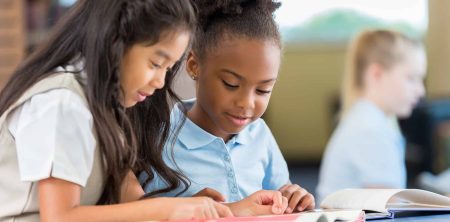The modern elementary teacher increasingly recognizes that academic success depends significantly on students’ social-emotional competencies—their ability to understand and manage emotions, establish healthy relationships, and make responsible decisions. Interestingly, high-quality kids animated shows have emerged as unexpectedly powerful tools for social-emotional learning (SEL), offering narratives that explicitly address emotional experiences, interpersonal challenges, and ethical dilemmas in formats accessible to young viewers. These animated stories provide emotional vocabulary, model healthy coping strategies, and illustrate complex social dynamics through engaging characters and situations that resonate with children’s lived experiences.
Research in developmental psychology supports the educational value of emotional storytelling through animation, demonstrating that children often process emotional concepts more readily through narrative examples than through abstract instruction. The animated medium offers unique advantages for SEL instruction—facial expressions can be exaggerated for clarity, emotional states can be visually represented through color and symbolism, and complex social situations can be simplified without losing their emotional authenticity. These visual scaffolds help young learners identify, name, and understand emotions that might otherwise remain abstract or confusing, laying essential groundwork for emotional literacy.
The parasocial relationships children develop with animated characters create powerful opportunities for emotional learning through identification and empathy. When students become invested in animated protagonists, they experience emotional resonance with these characters’ struggles and triumphs, developing empathy through this vicarious emotional experience. Teachers can leverage these connections by guiding reflective discussions about how characters feel in different situations, how they manage challenging emotions, and how their actions affect others. These conversations build emotional vocabulary while nurturing perspective-taking skills essential for positive social interactions.
Many contemporary animated programs deliberately incorporate SEL themes into their storylines, addressing topics like managing disappointment, resolving conflicts peacefully, embracing differences, or persevering through challenges. These narrative explorations of social-emotional themes provide teachers with ready-made discussion prompts for classroom conversations about emotional intelligence. By pausing at pivotal moments in these stories, educators can invite students to predict characters’ feelings, suggest alternative solutions to social problems, or connect fictional scenarios to their own emotional experiences.
Emotional regulation—the ability to manage strong emotions constructively—represents a particularly valuable focus area where animated content offers exceptional teaching opportunities. Quality animated programs frequently depict characters experiencing intense emotions, employing coping strategies, and regaining emotional balance. These scenes provide concrete models of emotional regulation that children can observe and potentially adopt in their own emotional management. Teachers report that referencing familiar animated examples during emotional coaching conversations helps students recall and implement these strategies during challenging moments.
The diversity represented in contemporary animated programming supports another crucial aspect of social-emotional development: cultural competence and respect for difference. When animated shows feature characters from various cultural backgrounds, family structures, ability statuses, and life experiences, they normalize diversity and model inclusive social interactions. These representations help children develop appreciation for human variation while recognizing our shared emotional experiences across differences. Guided discussions about these aspects of animated content foster inclusive attitudes that transfer to real-world social interactions.
Critics sometimes question whether screen-based emotional learning transfers effectively to real-life social situations. However, research indicates that with appropriate teacher mediation, animated content can indeed scaffold development of genuine social-emotional skills. The key lies in structured discussion and application activities that bridge fictional examples to students’ lived experiences. Effective teachers create this transfer through role-playing activities inspired by animated scenarios, journaling prompts that connect fictional situations to personal experiences, or community circles where students share how animated examples relate to classroom dynamics.
Classroom implementation of SEL through animation proves most effective when educators employ a sequential, intentional approach rather than occasional, disconnected viewing experiences. Some teachers develop curriculum maps that align specific animated episodes with particular social-emotional competencies, creating coherent learning progressions throughout the school year. Others integrate animated content into established SEL frameworks like CASEL’s five competency areas, using animation to illustrate each dimension of social-emotional development. This systematic approach ensures comprehensive coverage of essential SEL skills while maintaining student engagement through varied animated examples.
Parent-teacher partnerships strengthen the impact of animation-based SEL instruction by extending these learning conversations into home environments. Teachers who share information about which animated programs they’re using for SEL instruction enable parents to reinforce these lessons during family viewing time. Some educators provide simple discussion guides that help parents engage children in reflective conversations about the emotional content of favorite animated shows. This school-home connection creates consistency in SEL messaging while empowering families to transform entertainment into valuable developmental conversations.
As educational animation continues evolving, interactive SEL content offers promising new possibilities for personalized social-emotional instruction. Emerging platforms combine animated scenarios with interactive decision points where students choose how characters should respond to social and emotional challenges, then witness the consequences of these choices. These interactive narratives create safe spaces for emotional problem-solving practice and provide educators with insights into students’ social-emotional reasoning. This technological frontier represents the next evolution in animation’s contribution to comprehensive social-emotional education in tomorrow’s classrooms.

